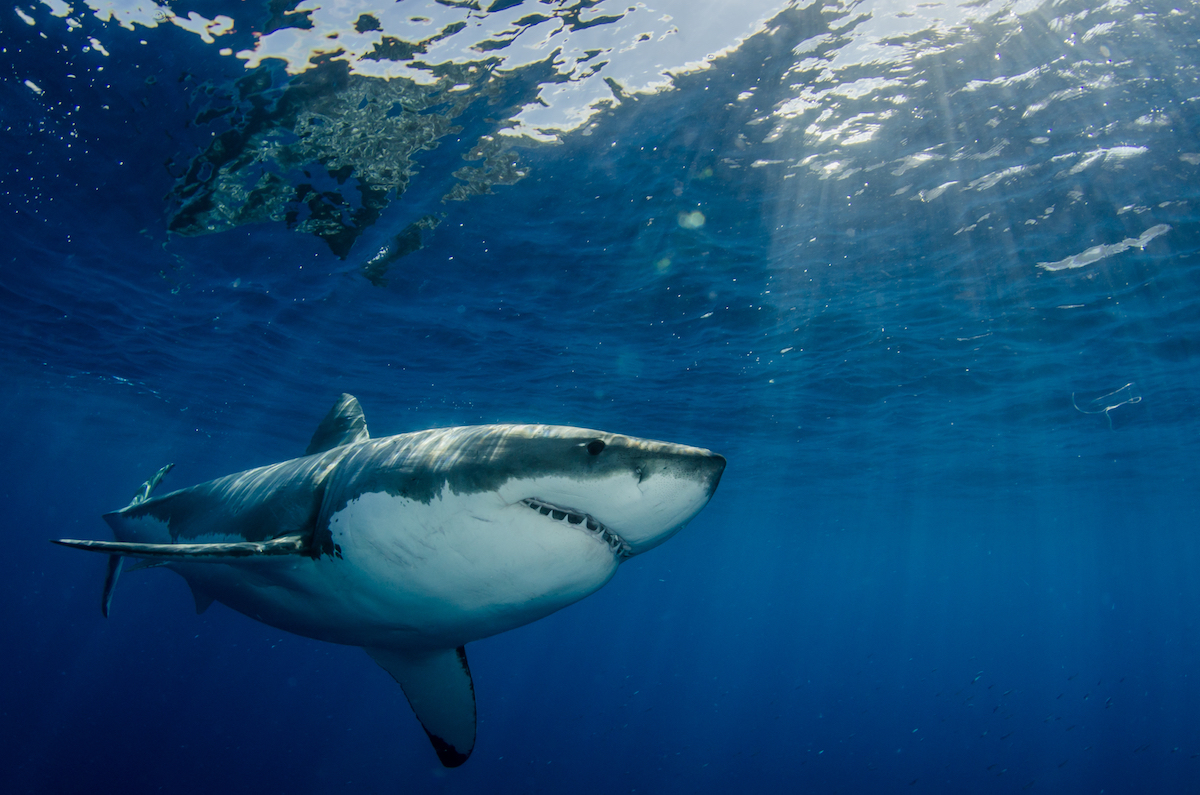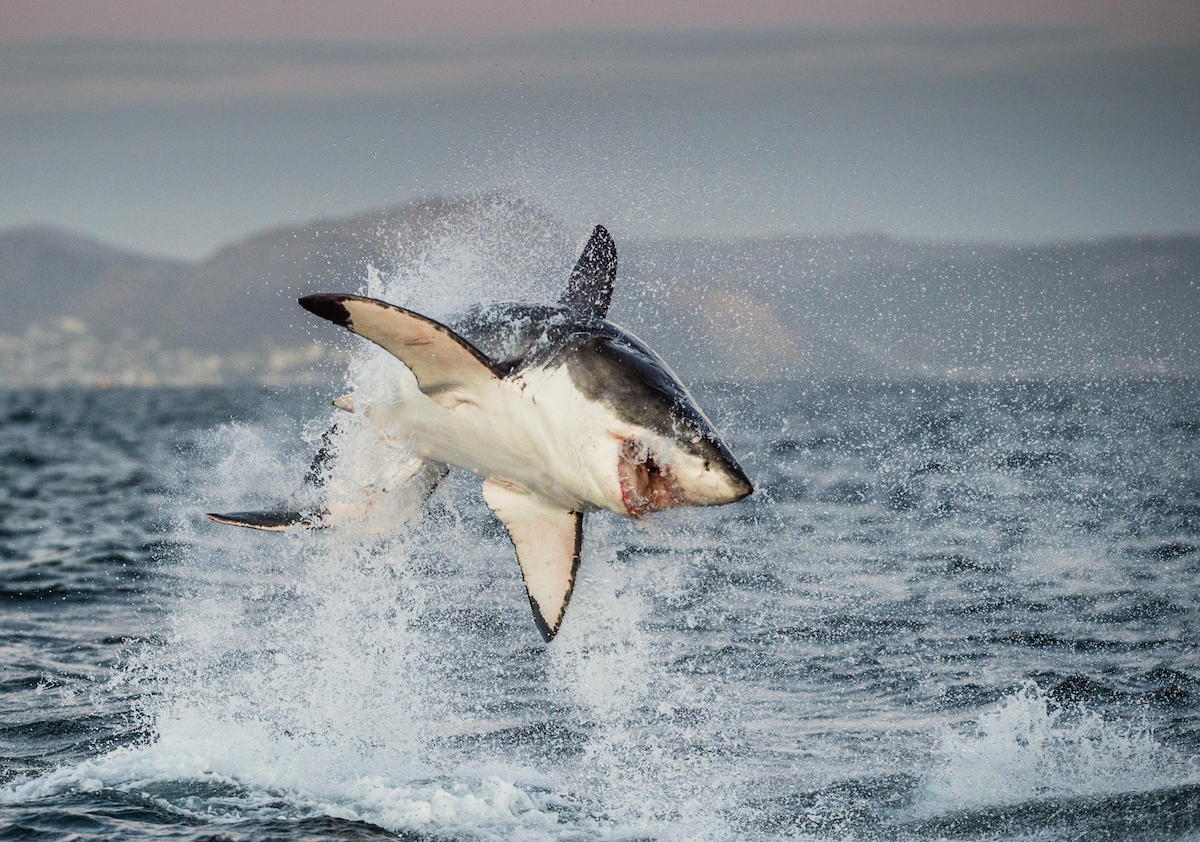Getting to know 'Jaws'

Dr. Greg Skomal, a shark biologist and recreational fisheries program manager, talked about the 'secret life' of sharks during his recent 2018 Enrichment in the Fall keynote lecture on campus. Image courtesy of Shutterstock.
-By Sonia Turosienski, KAUST News
For most beachgoers, finding a shark in the water usually means it's time to pack up and go home. For Dr. Greg Skomal, a shark biologist and recreational fisheries program manager at the Massachusetts Division for Marine Fisheries, a shark in the water is a just another day at the office—and a good one at that.
Skomal delighted the Enrichment in the Fall 2018 audience during his keynote lecture entitled "The Secret Life of Jaws," highlighting how little is known about sharks. He also discussed the new technology he and his team use to study shark behavior and movement ecology in the world's oceans.
"49 percent of shark species are data deficient. We don't know enough about their populations to know whether they are growing, shrinking or at risk of becoming over-exploited. What's lacking is basic information about biology, natural history, age, growth, reproduction and trophic ecology. This links to essential information about habitat, distribution and movement ecology," Skomal explained.

Shark biologist Dr. Greg Skomal discusses shark behavior and movement ecology during his 2018 Enrichment in the Fall lecture on October 22 on campus. Photo by Andrea Bachofen-Echt.
"The more we know about the daily behavioral patterns of sharks around the area, the better equipped we will be to advise beach managers on how to keep people safe," he explained.
Most of what researchers do know about sharks comes from predation events when the fish breaches in pursuit of food or a shark is fished or beaches itself on land. This is a narrow window into the daily life of sharks, as they spend up to 60 percent of their time deep below the surface.
To learn more about shark behavior when the organisms are out of sight, Skomal and his team use acoustic tags and—more recently—autonomous underwater vehicles (AUVs) to get a peek at where the mysterious fish travel.

Dr. Greg Skomal, a shark biologist and recreational fisheries program manager, talked about how little is known about sharks during his recent 2018 Enrichment in the Fall keynote lecture. Image courtesy of Shutterstock.
Skomal and his team partnered with the Woods Hole Oceanographic Institution and the Discovery Channel to adapt AUVs to shark research, producing the REMUS SharkCam. The operation was deployed in the waters around Guadalupe Island off the coast of Mexico. Skomal's local research partner Mauricio Hoyos had a hypothesis about why sharks rarely breach the water around Guadalupe Island—the shark was staying deep and striking prey from below.

Shark biologist Dr. Greg Skomal noted that 49 percent of shark species are 'data deficient' during his 2018 Enrichment in the Fall keynote lecture on campus. File photo.
"This was a classic predatory strike and something we usually see at the surface. Based on the movements we plotted, we were able to establish a predatory strike zone," Skomal explained. "We got some great information, including the first shots of white sharks sub-surface. We're definitely moving in the right direction."
Next, Skomal and his team are deploying an even bigger AUV with more depth capacity.
"I think it's time to go back to whale sharks. Whale sharks are a well-studied population with a great foundation of research, so it is the perfect species to take to the next level in terms of technology," Skomal concluded.

